
How to stop a dog from barking

Philippa Short
21 April 2023 | 10 minutes read
From the Basenji yodel to the Beagle yowl, our top dogs certainly have a colourful way of chatting. And being individuals, even the ‘quieter’ breeds can still be big talkers.
But what happens when those vocalisations get too much? Dog behaviourist Philippa Short shares her expert advice on how to manage excessive barking in different situations.
- Why do dogs bark?
> Practised barking becomes habitual barking - How to teach a dog other ways of communicating (other than barking)
> The two common traps of dealing with barking - How to stop a dog barking for attention
- How to stop a dog barking from anxiety
- How to stop a dog barking out of excitement
- How to stop a dog barking from boredom
- Managing other barking situations
> How to stop a dog barking at the door
> How to stop a dog barking while you’re eating
> How to stop a dog barking at things going past the house
> How to stop a dog barking in the car

Why do dogs bark?
Barking (and whining, howling, and baying, depending on the breed) is used as a way of communicating with us.
Some breeds are known for being highly vocal and bark more than others, but expecting a dog never to bark is unrealistic.
If your dog’s barking has become problematic, you need to look and understand why they’re vocalising so much. This will then help you know what to do next.
There’s lots of reasons why dogs bark, including:
- Boredom/lack of exercise
- Anxiety
- Excitement
- Frustration
- Habit
- Fear
- Attention
- Knowing it gets them what they want

> Practised barking becomes habitual barking
Any behaviour your dog practices becomes habitual, including barking.
Barking can also be self-perpetuating because of the endorphins it releases. Even if it doesn’t get your pooch what they originally wanted, they still get some satisfaction from it.
It’s important to remember that a dog will seek out attention from you, even if you only ever give them negative feedback.
But they’d much rather do things they like and get praise from the start. So remember to acknowledge and reward them when they do something you like, such as being quiet.
And if they do start barking, you can try teaching them an alternative behaviour.
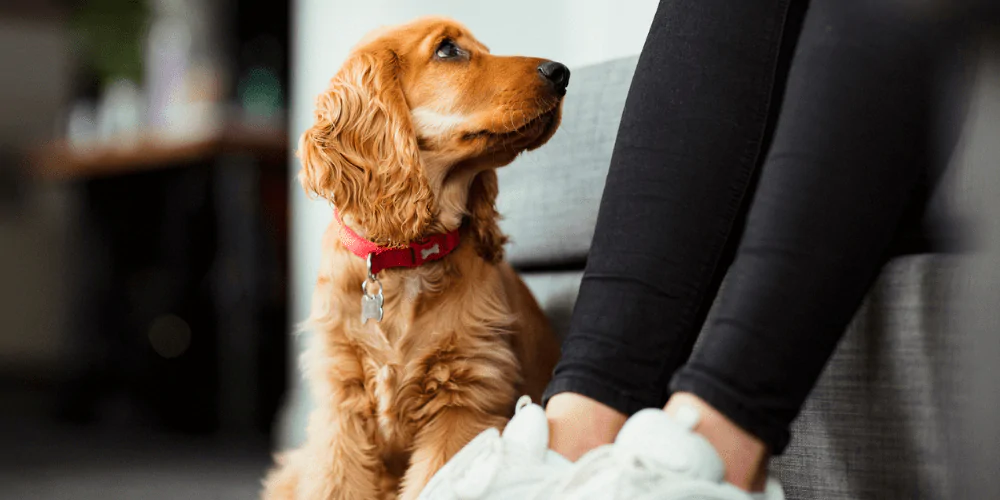
How to teach a dog other ways of communicating (other than barking)
Are you reinforcing to your dog that barking is a great way for them to get what they want?
You never want to shut down your dog’s ability to communicate with you. But if barking gets them what they’re after, they quickly realise it gets them other things too.
One of the most common reasons for an excessively vocal dog is that they’re demanding things from you.
For example:
- Many pet parents want their dogs to let them know when they need the toilet.
- As soon as they start barking, they immediately go to let them out into the garden.
- But instead of ‘barking equals toilet access’, this actually translates to your dog as ‘barking equals open door’.
So don’t encourage them to think shouting is going to help them get their way – teach them a different way of talking to you.
When it comes to shifting how your dog communicates:
- Look at creating a trusting relationship
- Teach an alternative behaviour that’s less demanding, such as ‘sit’, ‘wait’, or ‘watch me’
- Encourage them to communicate with you, not at you
Going back to the toilet example:
- If they want the toilet, encourage them to come and sit or stand in front of you
- You can then ask if they need to go out, to which they’ll get excited as you’ve listened
- You can then both go out in the garden together
Keep in mind that there’s a fine line between stopping bad manners and asking for a big display of obedience.
If your dog is barking for their food, their bowl doesn’t go down on the floor until they’ve stopped. But don’t make them keep waiting to eat as this builds frustration and anxiety around their food.

> The two common traps of dealing with barking
Watch out for the two common pitfalls of trying to manage your dog’s excessive vocalising: permanently ignoring barking and unintentionally rewarding barking with food.
Ignoring barking
The first trap is following the idea of ignoring unwanted behaviour and then praising positive behaviour. So in this case, you’d ignore your pup’s barking and praise them when they’re quiet.
Although this can work with some dogs, just be wary that it won’t always work for others, as barking is self-perpetuating. So you may have to try teaching them an alternative behaviour instead.
Unintentionally rewarding barking
The second trap is asking for another behaviour when your dog starts barking, and then immediately giving them a treat.
Dogs who bark for attention interpret this as ‘bark and do the alternative behaviour to get a treat’.
So what you want to try instead is to teach them a mutually exclusive behaviour (MEB). This is where they learn that two different behaviours can’t happen at the same time, so they have to pick one.
- If you know your dog is about to start barking, work in the alternative behaviour first, and then reward that behaviour with a treat.
- If you miss your window to reward them before they bark, give them verbal praise instead of a treat.

How to stop a dog barking for attention
Barking for attention is another common reason for your pup to get overly vocal with you.
- Completely ignore them if they bark at you for a toy, attention, or fuss
- Reward, praise, and acknowledge all the times they don’t bark, such as when they come and lie down or sit quietly with you
- If ignoring them doesn’t work, pick another strategy like teaching them an alternative behaviour
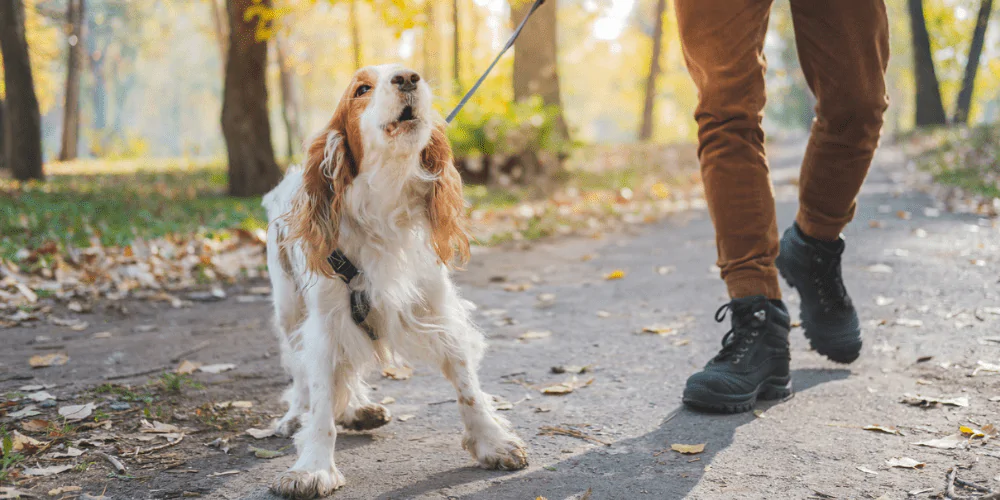
How to stop a dog barking from anxiety
A dog can suffer from two types of anxiety: generalised anxiety and separation anxiety.
- Separation anxiety – your dog becomes anxious when left alone
- Generalised anxiety – your dog is still anxious in your company
To find out more about separation anxiety, take a look at our handy going on how to look after a dog with separation anxiety.
If their excessive barking comes from an anxious place, you’ll need to work with a qualified behaviourist.
Barking is just a symptom of the underlying cause, and a dog expert can help you figure out what’s causing the anxiety, such as:
- Noise phobias
- Being overstimulated
- General worry
- Anxiety over other dogs
Your dog may even need to take anti-anxiety medication to help manage their generalised anxiety. To help figure out what’s going on, a behaviourist will look at:
- Any possible medical reasons
- Your dog’s history (such as a rescue background)
- Their general environment (like whether you live in a noisy area)
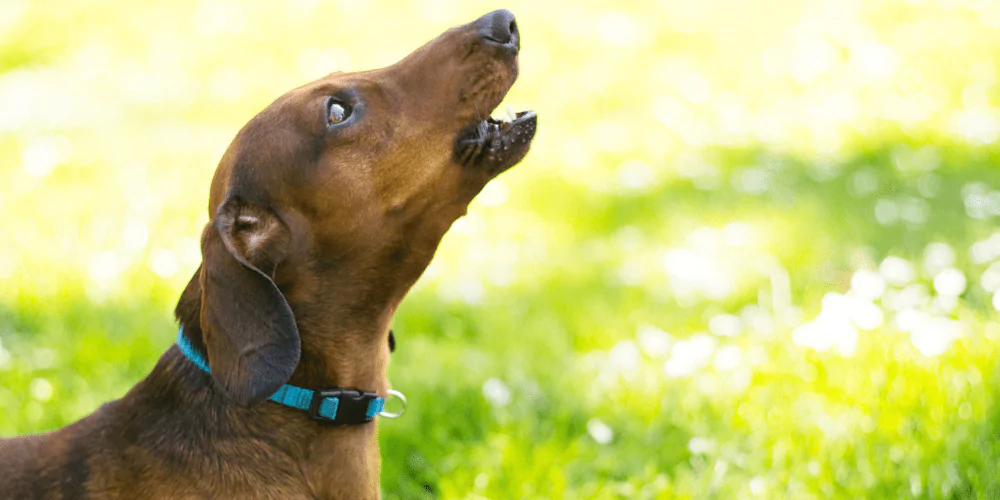
How to stop a dog barking out of excitement
Like a dog with anxiety, you’ll need the support of a behaviourist for dogs who bark excessively from excitement.
General excitement barking can be seen when:
- People are entering or leaving the house
- When you’re walking your dog out and about
- When your dog is ready to go to the park
- Meeting other dogs

How to stop a dog barking from boredom
A bored dog can easily become a vocal and even destructive dog. See if sufficient exercise (for their breed and energy levels) helps to beat their boredom.
It may be that your pup struggles to manage lots of exercise, or perhaps some days you have time constraints. In these situations, the good news is there’s plenty of other activities to tire out your dog, like:
- Interactive toys
- Scent work
- Short training sessions
You can find lots of ways to give your physical and mental stimulation in our handy guide to dog enrichment.
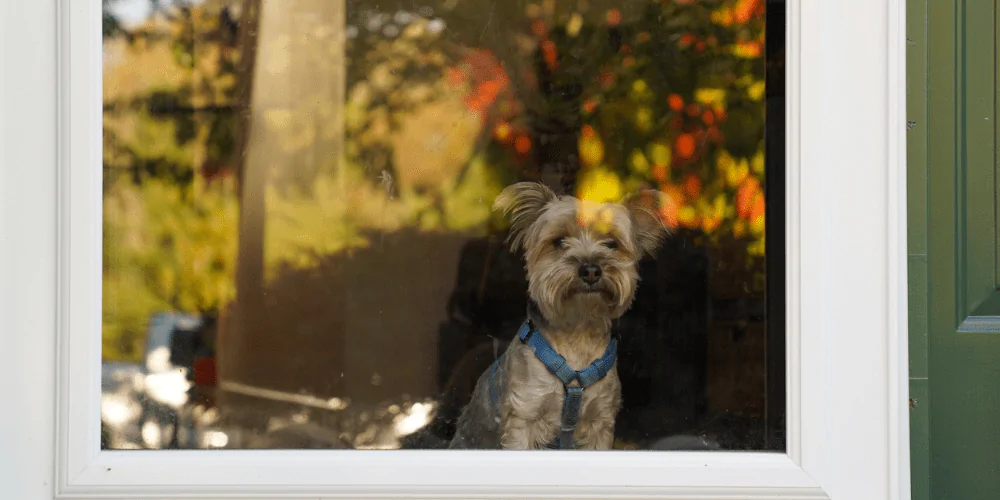
Managing other barking situations
> How to stop a dog barking at the door
Your pup soon learns that a knock at the door/ring of the doorbell means something or someone is there.
Barking at this noise could mean they’re afraid or excited at someone’s arrival. Either way, they’re alerting the visitor to their presence and telling them it’s their house. So you can either:
- Manage – the noise starts the barking and the visual of the visitor keeps it going, so put your pup behind a gate in a room away from any visuals
- Teach – give your pup ‘go to place’ training when they hear activity at the door
With the ‘go to place’ cue:
- Thank your pup for alerting you to the door
- Ask them to go to their ‘place’
- Heavily reward them for staying in that spot and not barking
Any breed of dog can learn ‘go to place’, it just takes practice. Remember:
- Their spot/place depends on your house, so choose what works for you
- Build lots of value in allowing your dog to be in the same area but staying in their ‘place’ when the door goes
- Their job is to be in their ‘place’, so the idea is that being rewarded for this outweighs their need to bark at the door
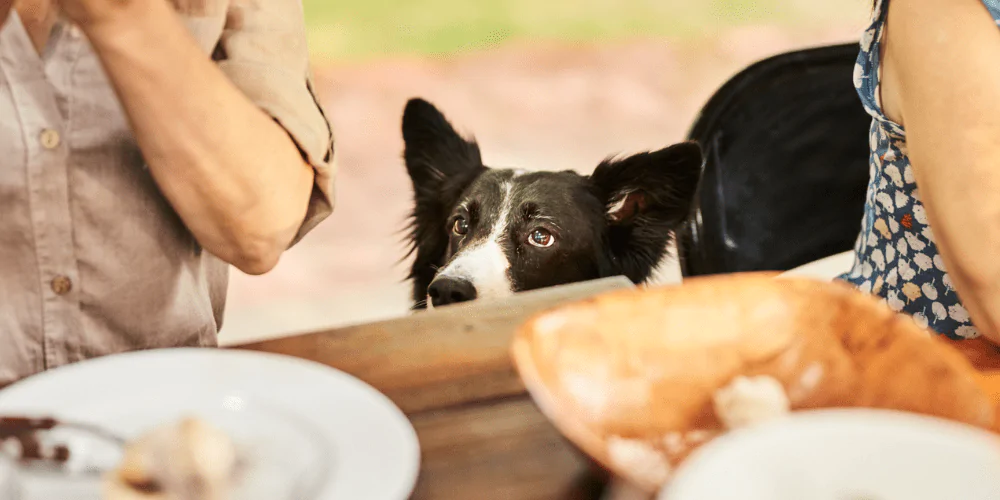
> How to stop a dog barking while you’re eating
Older dominance theory taught many pet parents that it was better to eat before their dog does.
But it’s very unfair to eat in front of your dog when they’re hungry, especially if they’re a puppy or adolescent. They’ll be going through a growth period and are genuinely starving.
So feeding them before you sit down to eat will leave them feeling more satiated and relaxed around other food.
If you’d prefer to manage excessive barking during your meal times, put your pup in a crate or behind a baby gate while you eat.
If you’d like to be more proactive, teach your dog to settle quietly on a bed in the room.
- This tells them they can still be included in the eating area but they’ve had their food and shouldn’t be begging for yours
- If they’re getting rowdy and hungry, give them a chew toy or Kong to help keep them calm and quiet on their bed

> How to stop a dog barking at things going past the house
It’s completely normal for dogs to alert their family to what they think is a potential danger or problem.
Some pooches think they control the street outside because they see a moving visual, bark at it, and it goes away.
To manage this, you can:
- Remove access to areas where your dog can see the visual trigger (such as a sofa near a window)
- Use frosted window vinyl to temporarily blur outside visuals while you train your pup
When it comes to the training side of things, use a three-step bark rule (which can also be used for door barking too):
- First round of barking – say ‘thank you, enough now’ in a light and appreciative tone. If they stop barking there and then, give them lots of praise.
- Second round of barking – say ‘enough now’ in a calm but deeper tone. Give them lots of verbal praise if they stop.
- Third round of barking – gently go and get them (on a lead if needed) and put them in a time out. This is teaching only and not a punishment, so only put them in time out for a minute.
After a minute, let your dog back out and act normal. Restart the three-step barking process again each time it’s needed.
Your pup learns to respond to the first thank you as they’ve alerted you to the ‘danger’ and know you have it handled.
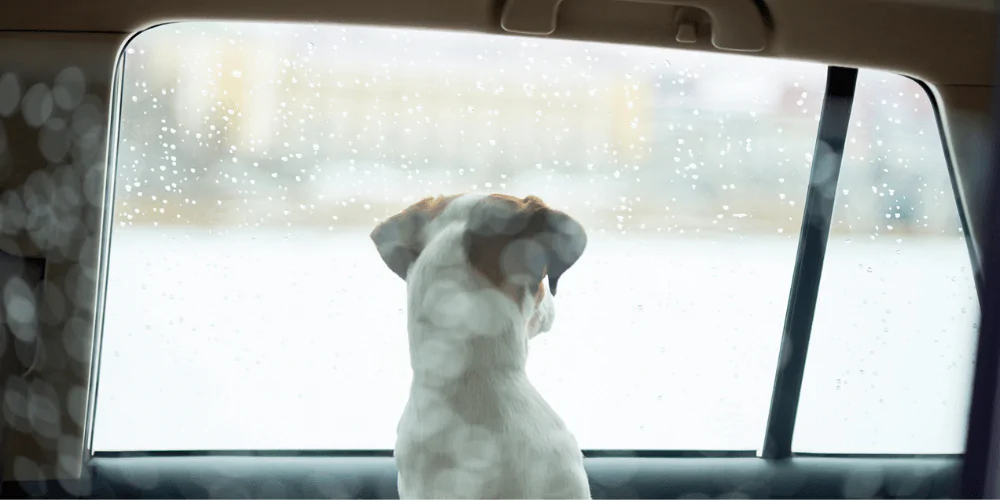
> How to stop a dog barking in the car
A car journey to a fun dog walking location may make some pups overly vocal with excitement.
So be wary of parking up and letting your dog charge straight out of the car (or unclipping their lead) while they’re still barking. This tells them they can be vocal and the door will open or they’ll be let off to do their own thing.
Instead:
- Wait until they’re not vocalising, then open the car or boot door
- If they begin to bark, close the door, and wait until they’re quiet to open it
- If they start barking once out of the car, stand and wait, then walk and praise when they’re quiet again
- Keep repeating the walk and praise, remembering to stop and wait each time they begin barking again
Remember, we don’t want a robotic, emotionless dog – body wiggling is OK! We’re teaching them that excitement is fine, but shouting isn’t acceptable.
With Petsure dog insurance, you can claim for behavioural sessions with a qualified animal behaviourist.


